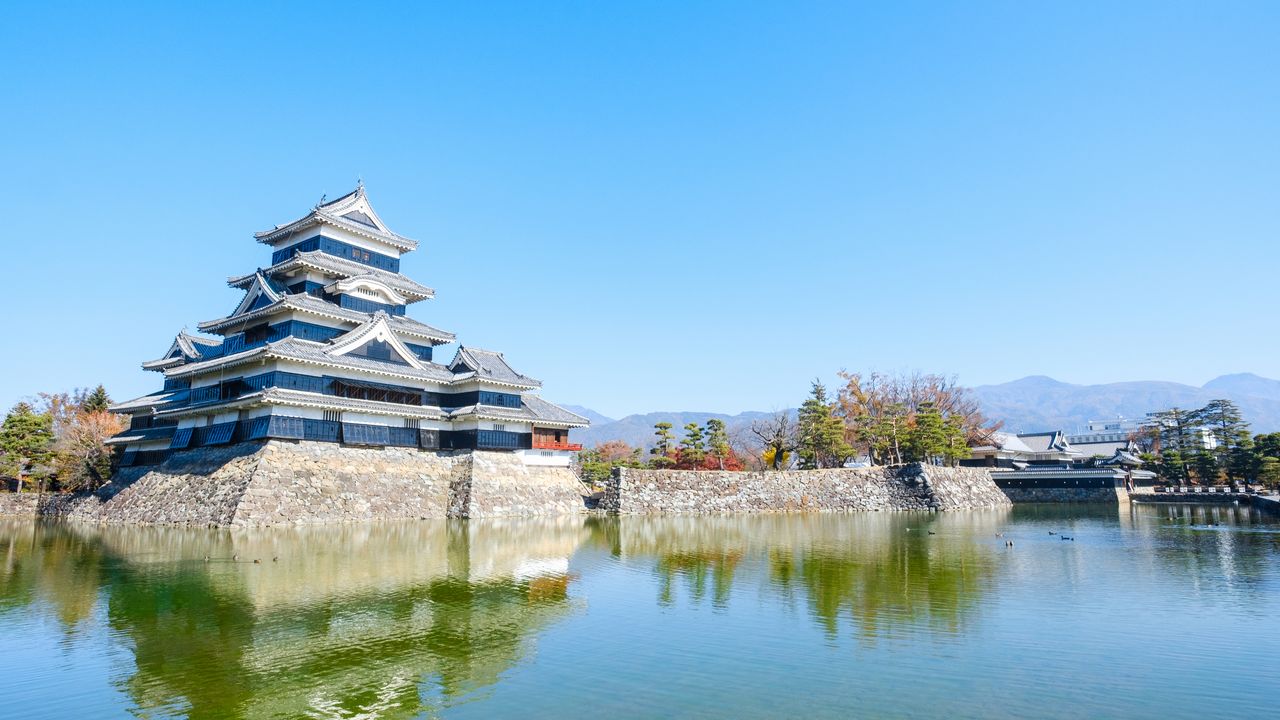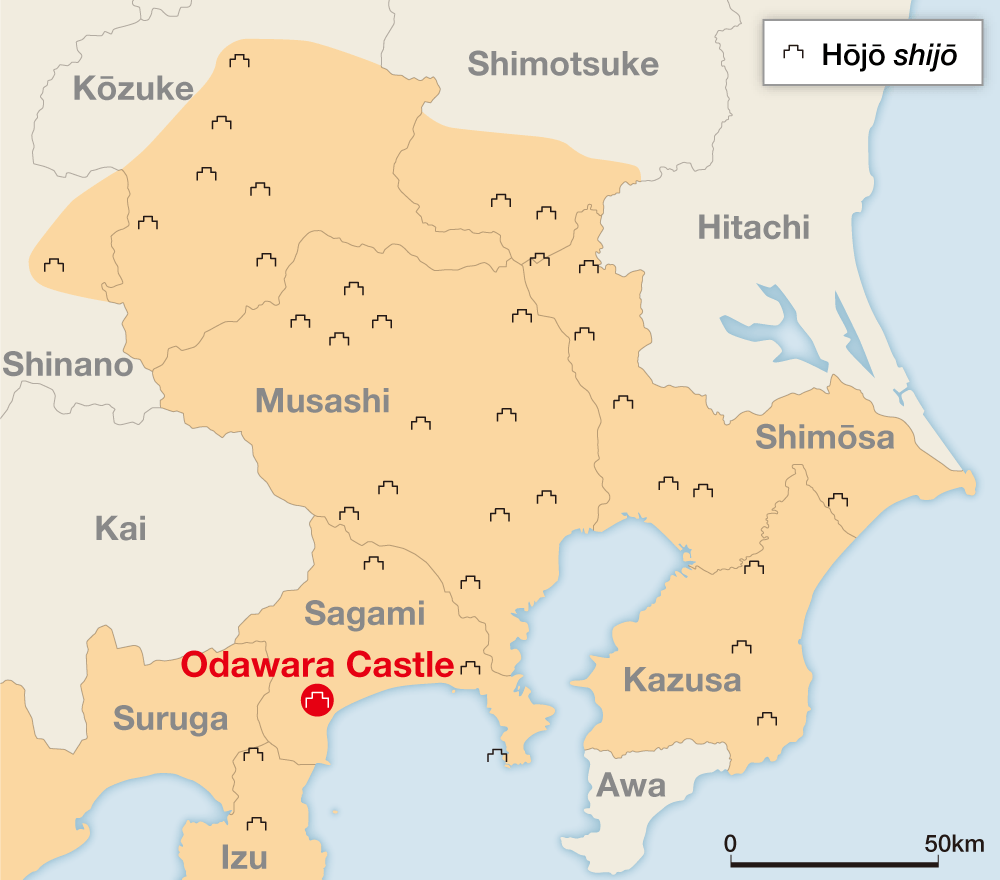
The Basic Types of Japanese Castle
History Architecture Travel- English
- 日本語
- 简体字
- 繁體字
- Français
- Español
- العربية
- Русский
Yamajiro
Built into steep mountain terrain, this was once the most common type of castle constructed in Japan. A location on high ground meant clear views, so enemies could be spotted as they launched an attack. It also made it difficult for enemies to climb the mountainsides, creating an advantage in battle.
Many of these castles date back to the time of the Ōnin War (1467–77) and it is believed that between 30,000 to 40,000 yamajiro were built during the Warring States period (1467–1568).
At that time, the whole of Japan was mired in civil strife. Battles broke out everywhere. It was against this background that warlords, who up to then had been living in residences on flat terrain, such as at the base of a mountain, started to build temporary fortresses on the mountains themselves. This led to them alternating between living on flat terrain during times of peace and shifting to the mountain fortresses when waging war.
As battles became more commonplace, they made the yamajiro larger by building fortifications atop multiple ridges and connecting them together.

This computer-generated image is a reconstruction of Odani Castle in Nagahama, Shiga Prefecture, the residence for the Azai clan for three generations. It shows how the fortifications on the ridges were connected. The castle was abandoned after Azai Nagamasa was defeated by Oda Nobunaga. (Computer graphics courtesy of Naruse Kyōji)
In many cases, forts were constructed halfway up the mountain and then connected to the top of the peak. This meant they were no longer temporary strongholds as entire mountains became substantial fortresses.
Iwamura Castle (Gifu Prefecture), Takatori Castle (Nara Prefecture), and Bitchū Matsuyama Castle (Okayama Prefecture), known as Japan’s three great yamajiro, are examples of mountain fortresses, with a honmaru main bailey connected side-by-side with other baileys in a renkaku-style layout. Of the 12 castles built before 1868 with surviving central keeps, Bitchū Matsuyama Castle commands the highest location.

Bitchū Matsuyama Castle, classed as one of the three great yamajiro of Japan, is referred to as a “castle in the sky,” and renowned for its beauty as it seemingly floats on a sea of clouds. (© Pixta)
Hirajiro
Japan’s extensive mountainous territory meant that many of its castles were yamajiro. However, where there were no hills in the surrounding area, they had to be built on flat terrain. These are known as hirajiro or “flatland castles.” Even though they were built on the flat, good use was made of rivers, swamps, and ponds to form moats and make it more difficult for enemies to attack.
It is often said that yamajiro was the main type of castle during the Warring States period and the use of hirajiro spread during the early modern period. However, many hirajiro were also built during the Warring States period on wetlands. While yamajiro had strong defenses, flat terrain was more suitable for transporting provisions, mostly food, and allowing for movement of large armies. Many warlords therefore used a combination of mountain and flatland castles.
Yamagata Castle (Yamagata Prefecture) is representative of a hirajiro. The foundations were laid by Mogami Yoshiaki, a daimyō active from the Warring State period through the early Edo period (1603–1868).

In 1644, the shogunate ordered a drawing of Mogami’s Yamagata Castle to be made. It is representative of the type of hirajiro constructed during the Warring State period. (Courtesy National Archives of Japan)
Hirayamajiro
These flatland-mountain combination castles began appearing toward the end of the Warring State period and, while they were located in areas of flat terrain, they were constructed on small hills or mountains. Marugame Castle (Kagawa Prefecture) is one example, standing on the 66-meter-high Kameyama hill in the central northern area of the Marugame Plain. Even today, it rises above Marugame city center.

Marugame Castle still remains in its lofty position on the hill above the city. (© Pixta)
Many of the early modern castles, including Osaka, Himeji, Sendai, and Kumamoto are classed as hirayamajiro. When the Warring States period ended and peace prevailed, they became administrative bases for daimyō, acting as economic and logistical centers.
Shijō
The three main types of castle described above are categorized based on topography, whereas the next two—shijō and jinshiro—are classified according to strategy.
Shijō were branch castles that surrounded a “main castle” that was used as the daimyō’s base. The concept of shijō was broad, so it included forts and other similar structures too. As a single main castle was not enough to protect a whole territory, multiple shijō were constructed over a wide area, forming a defense network.

The defense network of shijō built by the Hōjō clan, showing provinces in what is now Kantō. This map, dated around 1585, is when the network was at its largest. The head of the clan at that time was Hōjō Ujimasa.

Hachiōji Castle in Tokyo is a typical example of a Hōjō clan shijō. (© Pixta)
The Hōjō clan were famed for their shijō. With Odawara Castle (a hirayamajiro in present-day Kanagawa Prefecture) as the main base, the branch castles stretched out to Gunma in the north, northern Chiba in the east, Nagano in the west, and Shizuoka in the south, covering what is now Tokyo and the surrounding seven prefectures.
This network of shijō was essential to the Hōjō clan in order to oversee the wide area of land under its control, which was flanked by the Tokugawa and the Sanada clan in the west, and the Uesugi clan in the north.
Jinshiro
These were fortified encampments built temporarily to surround enemy castles and Toyotomi Hideyoshi regularly used them in battle.
In 1581, during a siege of Tottori Castle he constructed a twelve-kilometer long series of jinshiro and instigated a strategy that essentially cut off food supplies to the fortress.

The series of jinshiro used by Hideyoshi to attack Tottori Castle, now known as Taikōganaru, is located 1.5 kilometers away from the castle itself. (© Pixta)
Many people starved to death at Tottori Castle. It was Hideyoshi’s jinshiro that led to one of the most appalling sieges in the history of the Warring State period. He is said to have been a castle-building fanatic. He constructed them as necessary and once their role was done, he abandoned them one after another, before going on to build others. While other warlords also used this strategy, Hideyoshi did so much more frequently.
It can be said that these temporary jinshiro were crucial to Hideyoshi achieving unification of Japan.
(Translated from Japanese. Banner photo: Matsumoto Castle is a classic example of a hirajiro or flatland castle. © Pixta.)
